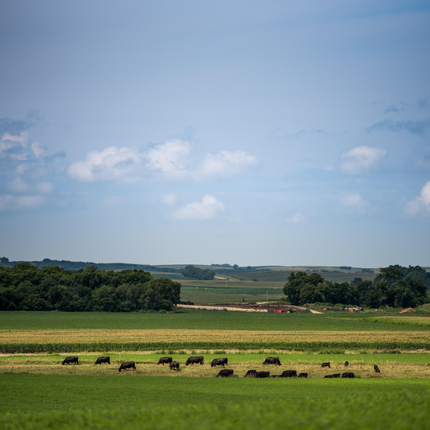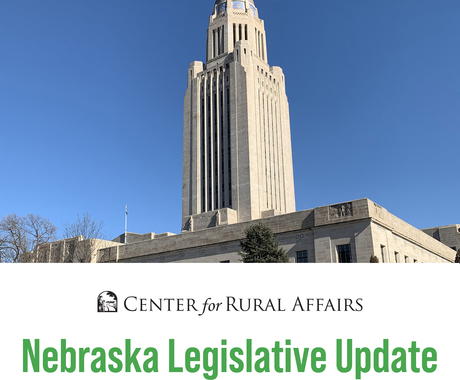This is the third installment in a series on carbon pipelines with the purpose of providing neutral-fact-based information.
Carbon pipelines have become a contentious issue in the Midwest in recent years as multiple projects have been proposed. One part of the debate focuses on the potential use of eminent domain to acquire land needed for the projects. Below, we will explore the history of eminent domain and its applications, eminent domain proceedings, and voluntary easements.
History of eminent domain and relation to pipelines
Eminent domain is the power of government to take property from private individuals, businesses, and non-governmental entities for public use. The issue of using this power for carbon pipeline development is not a new one. Carbon pipelines transport liquefied carbon dioxide for various uses by creating a highly pressurized system that cools the compound into a liquid state.
Carbon pipelines were introduced in the U.S. in the 1970s, with the majority of them built in the 1980s and 1990s. According to the Pipeline and Hazardous Materials Safety Administration, there are 5,339 miles of active carbon pipelines in the U.S. The vast majority are used in oil fields for enhanced oil recovery (EOR)—injecting high-pressure CO2, sometimes alternated with pulses of water—into wells. Some recent carbon pipeline proposals are for carbon sequestration from ethanol plants.
Eminent domain has been used for EOR carbon pipelines. For example, the state of Texas granted the power to carbon pipeline developers looking to use CO2 EOR. Texas landowners sued Denbury Green Pipeline-Texas after it tried to use eminent domain to build a carbon dioxide pipeline to extract natural gas. At issue was whether a pipeline is a common carrier, defined as a person or commercial enterprise that transports passengers or goods for a fee and open to the general public. Eventually, the courts upheld the designation that Denbury was a “common carrier” with the right to exert eminent domain.
Similar debates are taking place in response to carbon pipeline developments in the Midwest, where eminent domain authority is tied to the common carrier designation.
Proponents of carbon pipelines have argued that this serves the general public by cutting the carbon footprint of ethanol production to keep biofuels viable in the future. According to ABF Economic, 57% of the Iowa corn crop was used to produce ethanol in 2021, meaning the issue affects many farmers.
Opponents argue that eminent domain shouldn’t be used for private gain, and that there isn’t enough public benefit to outweigh what they say is substantial damage to private land. They have pointed to studies like one from Iowa State University that showed a loss of topsoil and a reduction in yields for the area around the Dakota Access Pipeline’s development in the first five years after its development.
Process of eminent domain
What happens once eminent domain is granted varies by state, as does how much landowners are compensated. The Fifth Amendment to the U.S. Constitution (Article 1, Section 19) requires just compensation to people whose property is taken. Just compensation can be applied to the fair market value for acquiring land or the loss of land value.
In Iowa, State Code Chapter 6B requires each county to have a compensation committee composed of community experts in local real estate values that determines the fair market value of land being condemned.
State code 21-35-1 in South Dakota says the condemner has to file a petition in circuit court and the fair market value and cost of damages to the property are determined by a jury trial.
Nebraska state code Chapter 76 (701-724) requires the condemner and condemnee try to agree on a value and if they cannot, a board of three appraisers in county court give an estimate of the compensation amount which can then be appealed in district court if there is further dispute.
Voluntary easements
Alternatively to eminent domain, carbon pipeline companies can acquire voluntary easement agreements from affected landowners. Companies generally prefer this route as it is quicker, better for landowner relationships, and less costly than going through trial proceedings. One developer, Summit Carbon Solutions, announced that it has signed voluntary easements with more than 60% of its proposed route in the four affected states — Iowa, Minnesota, Nebraska, and South Dakota.
Voluntary easement agreements can have a range of conditions. One of the central items is the amount of compensation received by the landowner for the addition of the pipeline and any damages from construction. These agreements can also lay out the exact terms of the easement like whether it is temporary or permanent, dictate future development on the land, and define what the pipeline can be used for.
It has been argued by pipeline opponents that the threat of eminent domain powers results in landowners being at a disadvantage in negotiations. They say pipeline companies don’t have a real incentive to try to acquire easement agreements and that they stick landowners with a bad deal. Legislation has been introduced in Iowa and South Dakota addressing these concerns by giving more land damage protections and incentives to negotiate fair deals.
Also read:
Part 1 - Lawmakers in Iowa, South Dakota introduce pipeline legislation
Part 2 - Who regulates carbon pipelines?
Part 4 - Efforts to pass legislation addressing carbon pipelines stalls in Iowa, South Dakota




